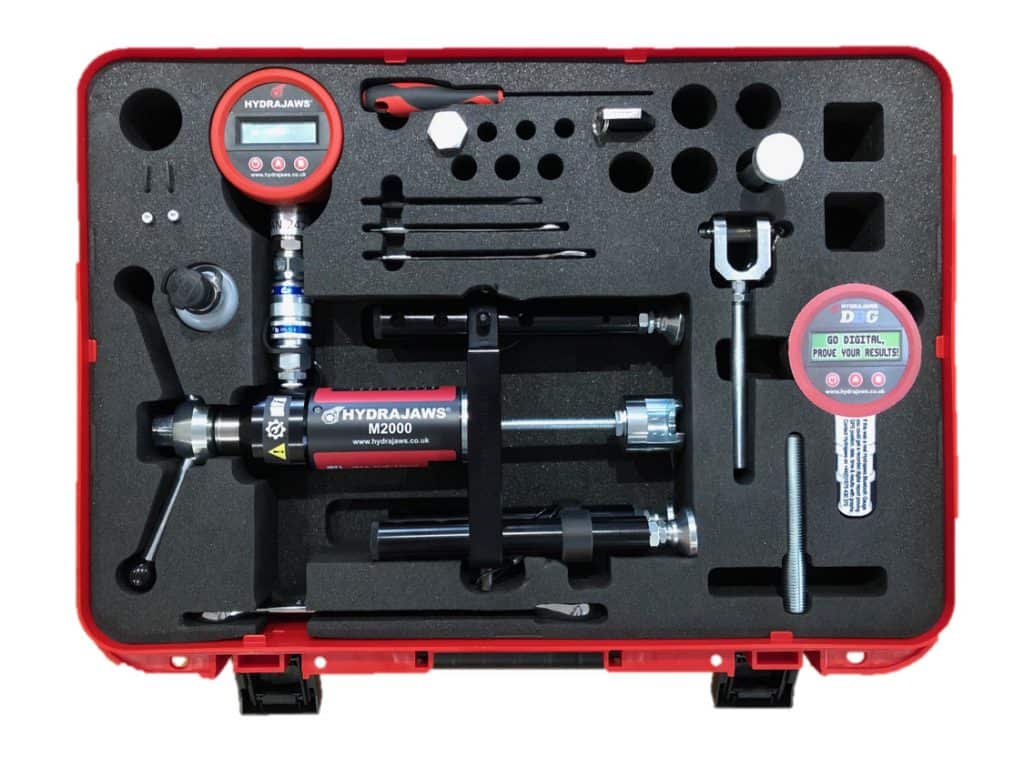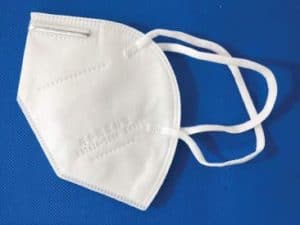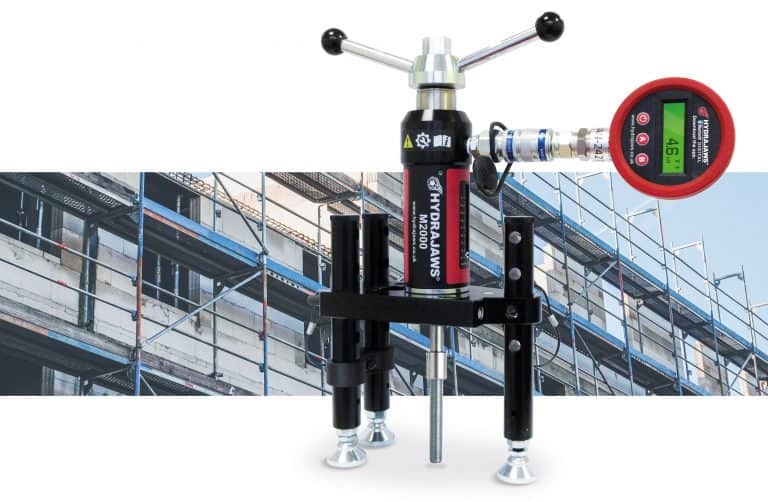Scaffolding firm fined £5K after scaffolder fell eight-meters
New 10-year deal for Altrex and Pop Up
Pop Up Products and Altrex have confirmed the signing of a new 10-year deal in the UK.
Since the partnership came into existence in 2009, both companies have been able to celebrate many successes together, such as developing the world’s first one-person erect tower range and delivering more than 700,000 tower components in the UK market. In the new 10-year agreement, they have agreed the sales and distribution of mobile access towers, ladders, stepladders and associated access products in the UK and Ireland. The pair have also agreed a Worldwide Intellectual Property (IP) partnership. “We have worked with Altrex since 2009, to find a partner like Altrex and to work with such a dedicated and professional team is fantastic. Our goals and values are completely aligned, this is demonstrated through our success in developing products, developing new markets and above all serving our customers, we are as one!” Nigel Woodger (Pop Up Products Limited, CEO) said. “On behalf of Pop Up Products, I thank Altrex for the last 11 years and now look forward to the next 10 years of our special partnership” Eugène Derksen (Altrex BV, CEO) added: “The partnership with Pop Up Products Limited is unique, reliable and one of its kind due to the joint competencies and creativity where the beliefs of both organisations come together. The distinctive combination that is created enables the customers as well as the end-users to have access to “the best solutions” when it comes to sustainability, ergonomics, user-friendliness and last but not least, safety,” “I also trust that our companies continue to work together for the next 10 years, like in the past 11 years and that this remains to feel ‘natural’, because the relationship has arisen from mutual added value which results in strengthening each other. Fortunately I still recognize this every day!”Animation provides safety advice for workers returning to site
The Construction Industry Coronavirus Forum (CICV) has produced a short animation which aims to put workers in the picture about a safe return to work.
The 90-second film produced by Scotland’s CICV Forum outlines key health and safety steps that all staff should take during the return to work. Entitled Working Together, the 90-second animation illustrates the positive day-to-day measures that workers in the construction industry can take to protect themselves, their colleagues and the wider community. Its release follows the success of a previous Forum animation, In It Together, which outlined procedures for emergency domestic work and was adapted by a host of other UK and European organisations for their own use. Its release follows the success of a previous Forum animation, In It Together, which outlined procedures for emergency domestic work and was adapted by a host of other UK and European organisations for their own use. Rebecca Crosland, Health and Safety Advisor at Forum member the Building Engineering Services Association, said: “The restart has the potential to be an unsettling time for everybody concerned, with people unsure about exactly what they should do. “This latest animation lays down in simple terms, with bright and cheerful graphics, the common sense ways in which everyone can contribute to a safe working environment and help keep the virus at bay.” In line with Scottish Government and Construction Scotland advice, which is underpinned in an earlier Forum guidance document, the animation advises that employees should:- Travel to work alone, if possible.
- Observe physical distancing at all times.
- Wear a proper face covering if required.
- Wash their hands properly and often.
- Regularly clean frequently touched tools, objects and surfaces.
- Bringing their own prepared food and drink.
- Staying on-site or using their vehicle during breaks.
- Always coughing into their sleeve or elbow if they don’t have a tissue.
- Staying at home and following Government guidance if they have Covid-19 symptoms.
- Reading their company’s Covid-19 policy and risk assessment.
South-West scaffolding firm relocates to new depot
A leading south-west scaffolding company has relocated to a larger depot to enable more growth.
Pro Scaffolding (South West) Ltd has moved to Avon Riverside Industrial Estate in Avonmouth. Established in 2010 Pro Scaffolding covers Bristol, the South West and Wales. According to reports the business has signed a ten-year lease on the 7,401 sq ft Unit 5 warehouse at Avon Riverside. The firm is currently working towards it’s NASC accredition and was previously based at Aldwick Court Farm in Redhill, Bristol. Property consultantancy company Knight Frank oversaw the property transaction who represented the owners of the unit London & Cambridge Properties. Rhys Jones of Knight Frank’s Industrial & Logistics division in Bristol, said: “Avon Riverside is a highly-favoured Industrial Estate, close to the entrance to Bristol Port, and adjacent to the J18 motorway junction, with direct access to the M5/M49 and to The Portway arterial route into Bristol city centre.” Dan Sullivan, chief executive of Pro-Scaffolding, added: “Trading from our new main depot in Avonmouth enables us to provide a very fast and efficient service to Bristol, Weston Super Mare and all surrounding areas.”PASMA guidance aims to protect scaffold tower users from coronavirus
New guidance from PASMA is helping managers and health & safety professionals keep scaffold tower users safe during the coronavirus outbreak, whether they’re off on a training course or using towers in the workplace.
In the new document released free-of-charge to the industry, PASMA offers its advice on the challenges being faced by those responsible for the health and safety of tower users as they plan a return to work. The guidance also covers issues such as how long the virus lasts on aluminium, how rescue plans will be affected, and how workers can avoid passing instruction manuals around. “We recommend ways to assemble a tower while keeping your distance from everyone else, suggesting that the most reliable method could be buying or hiring one-person towers, which are specially designed to be built and dismantled by one individual working alone,” PASMA said. As training starts to resume in some areas, PASMA has also addressed the need for people to be protected from coronavirus during their course. “We’ve taken the opportunity to reassure managers of the protective measures they can expect to be in place during these vital courses, from e-learning to increased hygiene and cleaning. We also explain how PASMA cardholders can get an extension if their qualification is due to expire before it’s safe for them to visit a training centre.” Roger Verallo, PASMA Chairman and Managing Director of Euro Towers, added: “Keeping tower users safe now means protecting them from coronavirus as well as falls and other injuries. Businesses are facing the unprecedented challenge of getting people safely back to work during a pandemic. Scaffold towers are only a small part of what they’ve got to consider, but scaffold towers are what PASMA knows best. We realised we could use our expertise to support all those whose workers will be heading back up towers and need to ensure every safety angle is covered.”Scaffolders provide essential work for NHS during lockdown
Royston Scaffolding has provided essential work for the NHS during the lockdown highlighting that work is still possible despite taking longer.
Cambridge and Hertfordshire based company Royston Scaffolding were recently on hand to help the NHS by providing essential work for St Michael’s hospital in Bristol during the Covid-19 lockdown. With social distancing restrictions and the understandably tight on-site measures put in place by the NHS, it meant that the scaffolding work took longer to construct than usual – But, it proved that even in these extreme conditions, it was still possible to continue. The project involved Royston Scaffolding erecting various structures to enable the pipework in the boiler room of Bristol’s St Michael’s hospital to be changed safely. St Michael’s is a maternity hospital and provides services to the south areas of Bristol. The team originally began work in Bristol just before the lockdown measures were introduced by the government on 23rd March 2020. As a result, the site was cleared temporarily until it was determined how work could continue safely. When work was allowed to continue, a team of three traveled to Bristol in separate vehicles with a letter from the hospital outlining the essential work they were doing. This came in handy when the lorry containing all the scaffold equipment was stopped by police to ask why they were traveling! To further add pressure to the situation, the power to the hospital would be turned off for 9 hours at a time to enable engineers to conduct their work safely. So, it was essential that the scaffolding crew worked quickly building the structures in time for this window. The largest scaffolding was a lifting frame structure, that allowed the engineers to lift the new pipework up and slide them through a hole in the wall on a Niko Track system. The team had to adhere to the 2m social distancing rule and follow a one-way system which made logistics very tough. And in addition to wearing their normal PPE, the team also wore face coverings which were reportedly difficult to wear initially, as they would steam up restricting visibility. But once the team got the hang of them this no longer became a problem and they were able to continue working at height safely. Although the work took longer than planned, the Royston Scaffolding team was able to complete the scaffolding structures in time for the engineers to conduct their work at the hospital.The Importance of Installing and Checking Scaffold Ties
The recent high winds from storm Ciara and Dennis have highlighted the potential damage and destruction that can be caused by improper scaffold installation. Jonathan Craig from Hydrajaws guides us on the importance of installing and checking scaffold ties.
Scaffold Ties
A scaffold tie is an important connection that fastens the scaffolding to a solid building or body to prevent it from collapse. When installed properly in a system they enable a resistance to forces trying to pull the scaffold away from the structure, such as high winds. From the initial design of the scaffold structure, the predictable loads of the scaffold on the main structure will be identified.
Why Test Anchor Ties?
There are a variety of anchor ties that a scaffold designer can specify. Each have their strengths and weaknesses, either in terms of achievable loads or suitability in base materials. The designer of the scaffold may initially specify the required anchor ties to be used to ensure that the scaffolding does not collapse away from the main structure. However, if the anchor ties are installed incorrectly, or even installed correctly into a weak material they will be compromised and potentially fail. That is why testing on-site in the actual working conditions is so important.
BS 8539:2012, Code of Practice
In BS 8539:2012, Code of Practice for the selection and installation of post-installed anchors in concrete and masonry, there are two types of site testing to be considered with scaffolding, Preliminary Test and Proof Tests:
Preliminary Tests
As the names would suggest, preliminary tests are performed on anchors before the scaffold is erected at a site. This is normally required when tying into masonry or other base materials where the anchor manufacturer cannot provide characteristic load data. This generally involves installing anchors into the masonry and pull testing the anchors to a required load. A minimum of 5 tests per base material is required.
It is strongly suggested to avoid pull testing these anchors to failure, as this is likely to cause unwanted damage to the building. When preliminary tests are carried out at site, it is important that the results of these tests are communicated effectively to the scaffolding designer.
At this point, the scaffolding designer may wish to increase the number of anchor ties, or use a different anchor tie. It is important to note that should a different anchor tie be used, that preliminary testing of the new tie is performed.

Proof Tests
On all jobs, proof tests of scaffold ties are required. These proof tests are not designed to be a check on the manufacturer’s load test data, but a check that the anchors have been installed correctly (to the manufacturer’s recommendations) and that the substrate is capable of taking 1.25 times the working load of each anchor. Proof testing to 1.25 times the working load rather than just the working load gives a ‘safety factor’ to the installation of the anchor tie in the substrate.
A minimum of three anchors or 5% of the anchors installed (whichever is the greater number) are to be tested per scaffold. It is best practice to spread these tests around the scaffold, in particular if different anchors have been used in different sections or if these anchors have been installed by different teams. Should a scaffold tie fail a pull test, then the frequency of anchor testing doubles.
The frequency doubles again should a second anchor fails. Should more than two anchors fail, then 100% of the anchors require proof testing. It is advisable that the anchor used and the installation method are re-visited. Should this be required, then it is important to use a reputable anchor company with a strong technical department.
The Importance of Recording the Test Data
In line with BS 8539, the results of the pull tests need to be formally recorded and retained with the site documentation relating to the scaffold structure. Traditionally, these results were recorded manually, noting down the load achieved. As with many aspects of inspections and testing, a recent development is a digital way to record the results of these tests.
This digital method enables whoever performed the pull tests to show that they have complied with the testing element of BS 8539, not only in the load applied, but that the load was held for the specified length of time and collates the data into a site test report. These records are to be retained for the lifetime of the scaffold, not just the erection phase.
Keeping full records for on-site tie testing the lifetime of the scaffold as part of a Technical File on-site is not only good practice, but demonstrates that you as a scaffold company are professional, methodical and takes safety very seriously.
This article was first published in the ScaffMag Magazine Issue 9Altrad secures North Sea offshore gas platform contract
Altrad has announced the penning of a contract for the construction, hook-up and commissioning of the Tolmount gas platform in the Southern, North Sea.
The company will be providing temporary access, engineering design, insulation, corrosion and fire protection, rigging and LOLER support to enable the hook-up and commissioning of the Tolmount offshore gas platform. Altrad has said the contract will commence immediately and will encompass the firm mobilising resources to Ravenna in Italy for the construction phase of the project. Altrad’s Director of Operations for Offshore Services, Chris Garland, commented: “We are delighted to have reached an agreement with our long-term partner Rosetti Marino SpA for the Tolmount platform and we look forward to using Altrad’s skills and expertise, to add value, during the life-cycle of this project.” This latest contract award comes after Altrad successfully supported the construction, hook-up and commissioning of Total’s West Franklin and Elgin B platforms in the UK North Sea. Peter Hughes, Director of Business Development & Strategy added: “The award of this contract, marks the beginning of Altrad’s transformation strategy in the UK offshore sector, wherein we have restructured the business, to put our client’s objectives at the heart of our decision making. This opportunity allows us to prove we can deliver enhanced value for our client, which exceeds that available from our competitors, and we will demonstrate that, not in our words, but in how we deliver a superior outcome for our client.”HSE issues safety alert over dodgy face masks
The Health and Safety Executive has issued a safety alert over dodgy Chinese face-masks which are flooding the UK market.
The HSE has stated that these sub-standard face-masks should not be used as PPE (Personal Protective Equipment) in the workplace. Within the HSE’s safety alert titled Use of facemasks designated KN95 it said: “A substantial number of face masks, claiming to be of KN95 standards, provide an inadequate level of protection and are likely to be poor quality products accompanied by fake or fraudulent paperwork. These face masks may also be known as filtering facepiece respirators. The government agency continued to explain that KN95 is a performance rating under the Chinese standard GB2626:2006, the requirements of which are broadly the same as the European standard BSEN149:2001+A1:2009 for FFP2 facemasks. However, there is no independent certification or assurance of their quality and products manufactured to KN95 rating are declared as compliant by the manufacturer. Personal protective equipment (PPE) cannot be sold or supplied as PPE unless it is CE marked. The only exception is for PPE that is organised by the UK Government for use by NHS or other healthcare workers where assessments have been undertaken by HSE as the Market Surveillance Authority. The HSE stress that KN95 masks must not be used as PPE at work as their effectiveness cannot be assured.










